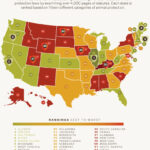Animal cruelty is a pressing issue that affects millions of creatures every year. While many individuals feel a moral obligation to intervene when they witness acts of cruelty, the process of getting someone arrested can be nebulous and fraught with challenges. How do you know your observations will lead to a conviction? Collecting solid evidence is paramount. This guide will delve into the steps you should take to gather compelling evidence, ensuring that you can effectively advocate for justice on behalf of the voiceless creatures suffering under malignant human behavior.
Understanding Animal Cruelty:
Before setting out to collect evidence, it is crucial to understand what constitutes animal cruelty. There are various forms, ranging from neglect and deprivation of basic needs to active abuse. Familiarizing yourself with local laws regarding animal protection can also be beneficial; definitions may vary from state to state. Recognizing the signs of abuse will heighten your awareness and prepare you for the necessary steps.
Observation: The First Step in Evidence Collection
The first step in acquiring evidence of animal cruelty is through meticulous observation. Spend time in the vicinity where you suspect cruelty is occurring, taking note of details that could be impactful. Ask yourself: What are the conditions of the animal? Is there food and water readily available? How is the animal behaving? Are there physical signs of injury or distress?
It is essential to remain discreet during these observations. Direct confrontation can sometimes exacerbate the situation and put both you and the animals in jeopardy. Instead, channel your energy into thoughtful documentation.
Document Everything
Once you have observed potential instances of cruelty, the next step is documentation. This is the linchpin of your evidence-gathering effort. Keep a detailed written account of each incident, including dates, times, and descriptions of what was witnessed. Describe not just what you saw but also the emotional reactions of the animals involved. This narrative can solidify your case, contributing emotional weight and factual integrity.
Accompany your written records with photographs and videos whenever possible. Visual evidence is often more compelling than written accounts alone. Ensure that your images show the full context. Capture the surroundings, the condition of the animal, and any identifiable features of the perpetrator’s property. Video evidence can be particularly striking, as it provides real-time documentation of behavior and conditions, potentially leaving an indelible impression on the authorities and the courts.
Gather Witness Testimonies
In many situations, you are not the only one who has observed acts of cruelty. Speak to neighbors or passersby who may share your concerns about the treatment of animals in that area. Their insights may add credibility to your claim. Discerning eyewitness accounts can provide a more comprehensive understanding of the situation and may even corroborate your observations.
When gathering witness statements, aim for reliability. Use a structured questionnaire to make sure that the testimonies are coherent and comprehensive. Look for specifics that align with your observations, whether they pertain to frequency, type of abuse observed, or specific incidents. Written statements, when possible, hold more weight than verbal accounts.
Contact Local Authorities
Once you have assembled enough evidence, it is time to reach out to local animal control, law enforcement, or organizations dedicated to animal welfare. Provide a clear and concise summary of your concerns, along with all documented evidence. Be prepared for follow-up inquiries and demonstrate your commitment by remaining engaged in the process.
Understand that animal control and law enforcement officials often handle numerous cases simultaneously. Patience is vital, as the response may not be immediate. However, continued communication is vital—express your desire for resolution and stay updated about the investigation.
Understanding the Legal Framework
To enhance the likelihood of successful prosecution, familiarize yourself with the legal framework surrounding animal cruelty in your jurisdiction. Individual states may have nuanced differences regarding laws and penalties. Knowledge of local statutes will equip you with the information necessary to guide authorities effectively.
For instance, ascertain which agency has jurisdiction. In some cases, local animal shelters may take precedence, while in others, police departments may be the primary point of contact. Each jurisdiction may also have particular requirements for the collection of evidence, so learning these can strengthen your case.
Consider Professional Help
If law enforcement does not take your claims seriously or if you feel uncomfortable pursuing the matter alone, consider enlisting the assistance of an attorney who specializes in animal law. Legal professionals can provide valuable insights and may have resources available for further investigation or advocacy. Your legal counsel can help navigate the complexities of the legal system, providing a clearer path toward justice.
Follow Up and Document Progress
Even after your initial report, remain vigilant. Follow up with authorities and document any progress or further evidence that may arise. Each new piece of evidence contributes to an escalating sense of urgency and importance; maintaining transparency fuels accountability.
Conclusion
Engaging in the pursuit of justice for animals subjected to cruelty is an arduous yet noble endeavor. The process of evidence collection can be intricate, but through meticulous observation, thorough documentation, and collaboration with local authorities, you can make a resounding impact. By arming yourself with knowledge and being proactive, you can foster an environment where justice is served, illuminating the plight of those unable to advocate for themselves. In the end, the challenge is not just about gathering evidence—it’s about ensuring a voice for the voiceless and paving the way for a future devoid of cruelty.










